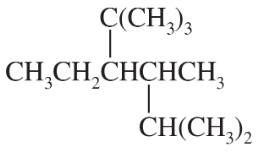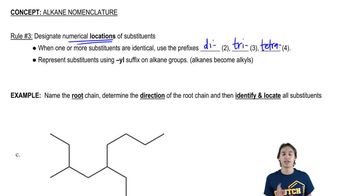The following names are all incorrect or incomplete, but they represent real structures. Draw each structure and name it correctly.
c. 5-chloro-4-methylhexane
d. 2-dimethylbutane



 Verified step by step guidance
Verified step by step guidance Verified video answer for a similar problem:
Verified video answer for a similar problem:



 3:43m
3:43mMaster The different parts of an IUPAC name with a bite sized video explanation from Johnny
Start learning